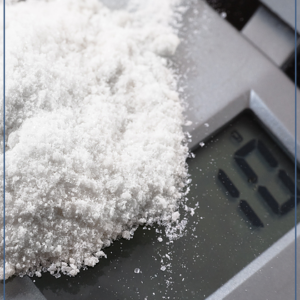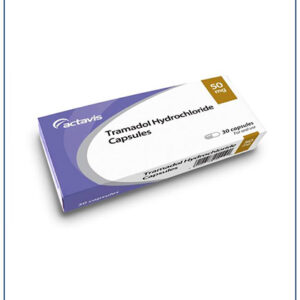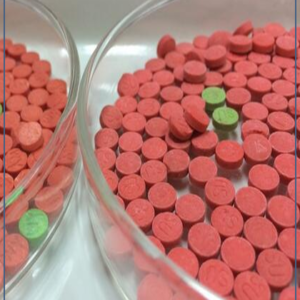What are Yaba Pills?
Yaba (Methamphetamine) is a combination of the stimulants methamphetamine and caffeine. It is produced in Burma by groups such as the United Wa State Army and marketed predominantly in Thailand. Methamphetamine is an addictive stimulant drug that strongly activates certain systems in the brain.
What do they look like?
A tablet, commonly reddish-orange or green, that fits inside the end of a drinking straw with a variety of logos — “WY” being the most common Yaba (Methamphetamine)
How are they used?
Normally it is ingested orally.
What are their short-term effects?
Immediately after smoking or intravenous injection, theYaba (Methamphetamine) methamphetamine user experiences an intense sensation, called a “rush” or “flash,” that lasts only a few minutes and is described as extremely pleasurable. Oral or intranasal use produces euphoria — a high, but not a rush. Other effects include irritability/aggression, anxiety, nervousness, convulsions, and insomnia.
What are their long-term effects?
Meth Yaba (Methamphetamine) is addictive, and users can develop a tolerance quickly, needing higher amount to get high, and going on longer binges. Some users avoid sleep for 3 to 15 days while binging. Psychological symptoms of prolonged meth use are characterized by paranoia, hallucinations, repetitive behavior patterns, and delusions of parasites or insects under the skin. Users often obsessively scratch their skin to get rid of these imagined insects. Long-term use, high dosages, or both can bring on full-blown toxic psychosis (often exhibited as violent, aggressive behavior). This violent, aggressive behavior is usually coupled with extreme paranoia. New research shows that those who use methamphetamine risk long-term damage to their brain cells similar to that caused by strokes or Alzheimer’s disease.
What is Methamphetamine?
Methamphetamine (Meth) is a powerfully addictive stimulant that dramatically affects the central nervous system.
The drug is made easily in clandestine laboratories with relatively inexpensive over-the-counter ingredients. These factors combine to make methamphetamine a drug with high potential for widespread abuse.
Methamphetamine is commonly known as “speed,” “meth,” and “chalk.” In its smoked form it is often referred to as “ice,” “crystal,” “crank,” and “glass.” Yaba (Methamphetamine)
Meth is a white, odorless, bitter-tasting crystalline powder that easily dissolves in water or alcohol. The drug was developed early in this century from its parent drug, amphetamine, and was used originally in nasal decongestants and bronchial inhalers. Methamphetamine’s chemical structure is similar to that of amphetamine, but it has more pronounced effects on the central nervous system. Like amphetamine, it causes increased activity, decreased appetite, and a general sense of well-being. The effects of methamphetamine can last 6 to 8 hours. After the initial “rush,” there is typically a state of high agitation that in some individuals can lead to violent behavior.
Methamphetamine is a Schedule II stimulant, which means it has a high potential for abuse and is available only through a prescription that cannot be refilled. There are a few accepted medical reasons for its use, such as the treatment of narcolepsy, attention deficit disorder, and – for short-term use – obesity; but these medical uses are limited.
What is the Scope of Methamphetamine use in the United States?
Methamphetamine abuse, long reported as the dominant drug problem in the San Diego, CA area, has become a substantial drug problem in other sections of the West and Southwest, as well. There are indications that it is spreading to other areas of the country, including both rural and urban sections of the South and Midwest. Methamphetamine, traditionally associated with white, male, blue-collar workers, is being used by more diverse population groups that change over time and differ by geographic area.
According to the 1996 National Household Survey on Drug Abuse, an estimated 4.9 million people (2.3 percent of the population) have tried methamphetamine at some time in their lives. In 1994, the estimate was 3.8 million (1.8 percent), and in 1995 it was 4.7 million (2.2 percent).
Data from the 1996 Drug Abuse Warning Network (DAWN), which collects information on drug-related episodes from hospital emergency departments in 21 metropolitan areas, reported that methamphetamine-related episodes decreased by 39 percent between 1994 and 1996, after a 237 percent increase between 1990 and 1994. There was a statistically significant decrease in methamphetamine-related episodes between 1995 (16,200) and 1996 (10,800). However, there was a significant increase of 71 percent between the first half of 1996 and the second half of 1996 (from 4,000 to 6,800).
NIDA’s Community Epidemiology Work Group (CEWG), an early warning network of researchers that provides information about the nature and patterns of drug use in major cities, reported in its June 1997 publication that methamphetamine continues to be a problem in Hawaii and in major Western cities, such as San Francisco, Denver, and Los Angeles. Increased methamphetamine availability and production are being reported in diverse areas of the country, particularly rural areas, prompting concern about more widespread use.
Meth use is rising
Drug abuse treatment admissions reported by the CEWG in December 1996 showed that methamphetamine remained the leading drug of abuse among treatment clients in the San Diego area and was second only to marijuana in Hawaii. Stimulants, including methamphetamine, accounted for smaller percentages of treatment admissions in other states and metropolitan areas of the West (e.g., 5 percent in Los Angeles and Seattle and 4 percent in Texas and San Francisco). By comparison, stimulants were the primary drugs of abuse in less than one percent of treatment admissions in most Eastern and Midwestern metropolitan areas, except in Minneapolis-St. Paul and St. Louis, where they accounted for approximately two percent of total admissions.
The preferred method of taking methamphetamine varies among geographical regions.
Note: Calendar year in Hawaii and San Diego; State fiscal year in San Francisco.
Source: Community Epidemiology Work Group, NIDA 1997
How is methamphetamine used?
Methamphetamine comes in many forms and can be smoked, snorted, orally ingested, or injected. The drug alters moods in different ways, depending on how it is taken.
Immediately after smoking the drug or injecting it intravenously, the user experiences an intense rush or “flash” that lasts only a few minutes and is described as extremely pleasurable. Snorting or oral ingestion produces euphoria – a high but not an intense rush. Snorting produces effects within 3 to 5 minutes, and oral ingestion produces effects within 15 to 20 minutes.
As with similar stimulants, methamphetamine most often is used in a “binge and crash” pattern. Because tolerance for methamphetamine occurs within minutes – meaning that the pleasurable effects disappear even before the drug concentration in the blood falls significantly – users try to maintain the high by binging on the drug.
In the 1980’s, “ice,” a smokable form of methamphetamine, came into use. Ice is a large, usually clear crystal of high purity that is smoked in a glass pipe like crack cocaine. The smoke is odorless, leaves a residue that can be resmoked, and produces effects that may continue for 12 hours or more.
What are the Immediate (Short-Term) Effects of Methamphetamine Use?
As a powerful stimulant, methamphetamine, even in small doses, can increase wakefulness and physical activity and decrease appetite. A brief, intense sensation, or rush, is reported by those who smoke or inject methamphetamine. Oral ingestion or snorting produces a long-lasting high instead of a rush, which reportedly can continue for as long as half a day. Both the rush and the high are believed to result from the release of very high levels of the neurotransmitter dopamine into areas of the brain that regulate feelings of pleasure.
Short-term effects of methamphetamine abuse:
- Increased attention
- Decreased fatigue
- Increased activity
- Decreased appetite
- Euphoria and rush
- Increased respiration
- Hyperthermia
Methamphetamine has toxic effects. In animals, a single high dose of the drug has been shown to damage nerve terminals in the dopamine-containing regions of the brain. The large release of dopamine produced by methamphetamine is thought to contribute to the drug’s toxic effects on nerve terminals in the brain. High doses can elevate body temperature to dangerous, sometimes lethal, levels, as well as cause convulsions.
What are the Long-term Effects of Methamphetamine Use?
Long-term methamphetamine abuse results in many damaging effects, including addiction. Addiction is a chronic, relapsing disease, characterized by compulsive drug-seeking and drug use which is accompanied by functional and molecular changes in the brain.
Long-term effects of methamphetamine abuse:
- Dependence
- Addiction psychosis
- Paranoia
- Hallucinations
- Mood disturbances
- Repetitive motor activity
- Stroke
- Weight loss
In addition to being addicted to methamphetamine, chronic methamphetamine abusers exhibit symptoms that can include violent behavior, anxiety, confusion, and insomnia. They also can display a number of psychotic features, including paranoia, auditory hallucinations, mood disturbances, and delusions (for example, the sensation of insects creeping on the skin, called “formication”). The paranoia can result in homicidal as well as suicidal thoughts.
With chronic use, tolerance for methamphetamine can develop. In an effort to intensify the desired effects, users may take higher doses of the drug, take it more frequently, or change their method of drug intake. In some cases, abusers forego food and sleep while indulging in a form of binging known as a “run,” injecting as much as a gram of the drug every 2 to 3 hours over several days until the user runs out of the drug or is too disorganized to continue. Chronic abuse can lead to psychotic behavior, characterized by intense paranoia, visual and auditory hallucinations, and out-of-control rages that can be coupled with extremely violent behavior.
Although there are no physical manifestations of a withdrawal syndrome when methamphetamine use is stopped, there are several symptoms that occur when a chronic user stops taking the drug. These include depression, anxiety, fatigue, paranoia, aggression, and an intense craving for the drug.
In scientific studies examining the consequences of long-term methamphetamine exposure in animals, concern has arisen over its toxic effects on the brain. Researchers have reported that as much as 50 percent of the dopamine-producing cells in the brain can be damaged after prolonged exposure to relatively low levels of methamphetamine. Researchers also have found that serotonin-containing nerve cells may be damaged even more extensively. Whether this toxicity is related to the psychosis seen in some long-term methamphetamine abusers is still an open question.
What are the Medical Complications of Methamphetamine Use?
Methamphetamine can cause a variety of cardiovascular problems. These include rapid heart rate, irregular heartbeat, increased blood pressure, and irreversible, stroke-producing damage to small blood vessels in the brain. Hyperthermia (elevated body temperature) and convulsions occur with methamphetamine overdoses, and if not treated immediately, can result in death.
Chronic methamphetamine abuse can result in inflammation of the heart lining, and among users who inject the drug, damaged blood vessels and skin abscesses. Methamphetamine abusers also can have episodes of violent behavior, paranoia, anxiety, confusion, and insomnia. Heavy users also show progressive social and occupational deterioration. Psychotic symptoms can sometimes persist for months or years after use has ceased.
Acute lead poisoning is another potential risk for methamphetamine abusers. A common method of illegal methamphetamine production uses lead acetate as a reagent. Production errors may therefore result in methamphetamine contaminated with lead. There have been documented cases of acute lead poisoning in intravenous methamphetamine abusers.
Fetal exposure to methamphetamine also is a significant problem in the United States. At present, research indicates that methamphetamine abuse during pregnancy may result in prenatal complications, increased rates of premature delivery, and altered neonatal behavioral patterns, such as abnormal reflexes and extreme irritability. Methamphetamine abuse during pregnancy may be linked also to congenital deformities.
How is methamphetamine different from other stimulants, like cocaine?
Methamphetamine is classified as a psychostimulant as are such other drugs of abuse as amphetamine and cocaine. We know that methamphetamine is structurally similar to amphetamine and the neurotransmitter dopamine, but it is quite different from cocaine. Although these stimulants have similar behavioral and physiological effects, there are some major differences in the basic mechanisms of how they work at the level of the nerve cell. However, the bottom line is that methamphetamine, like cocaine, results in an accumulation of the neurotransmitter dopamine, and this excessive dopamine concentration appears to produce the stimulation and feelings of euphoria experienced by the user. In contrast to cocaine, which is quickly removed and almost completely metabolized in the body, methamphetamine has a much longer duration of action and a larger percentage of the drug remains unchanged in the body. This results in methamphetamine being present in the brain longer, which ultimately leads to prolonged stimulant effects.
Although both methamphetamine and cocaine are psychostimulants, there are differences between them.
| METHAMPHETAMINE | COCAINE |
|---|---|
| Smoking produces a high that lasts 8-24 hours | Smoking produces a high that lasts 20-30 minutes |
| 50% of the drug is removed from the body in 12 hours | 50% of the drug is removed from the body in 1 hour |
| Limited medical use | Used as a local anesthetic in some surgical procedures |
This methamphetamine (meth) substance abuse info provided by Narconon International.











Reviews
There are no reviews yet.